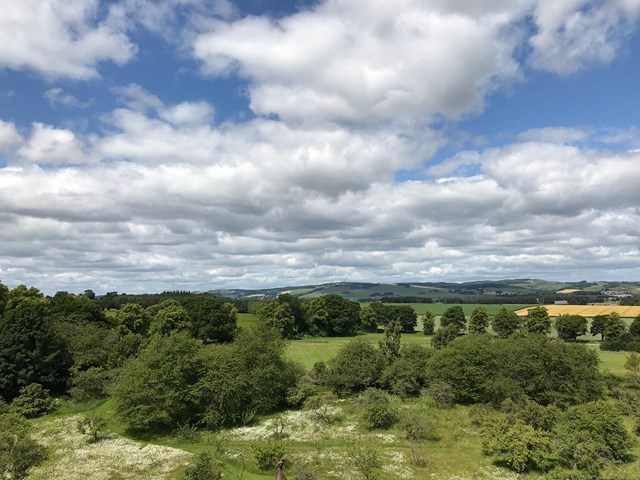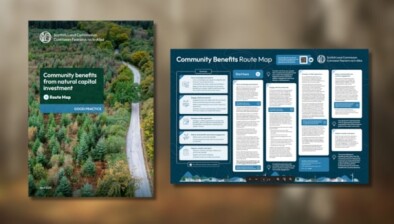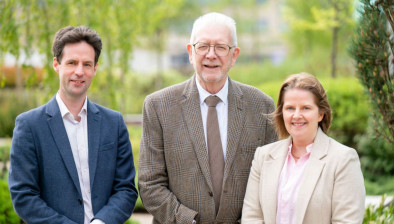Non-farming investors ‘playing an increasing role’ in Scotland’s rural land market
Scotland’s rural land market and values are changing amid strong timber prices and rising demand in non-farming leisure estates, according to a report published today by the Scottish Land Commission.

The report shows the Scottish rural land market is characterised by exceptionally high demand but continued low supply, resulting in rising values.
The Rural Land Market Insights Report established that non-farming investors are playing an increasing role throughout the land market and there is heightened demand for smaller farms as lifestyle holdings and from corporate entities and investors interested in plantable land and forestry holdings.
The report was compiled by Scotland’s Rural College (SRUC) in partnership with land agents Savills and Strutt & Parker, with support from the Royal Institution of Chartered Surveyors (RICS). It draws on published market information and interviews with sector experts, to provide a current picture of buyer and seller motivations, to better understand the land market and what is driving it.
Hamish Trench, chief executive of the Scottish Land Commission, said: “This report shows what is happening in the rural land market and helps us understand why. Emerging carbon and natural capital value is an increasing influence, but other drivers, particularly high timber prices and forestry values remain significant.
“It emphasises that while the amount of land coming to the market has remained largely the same over recent years, demand from different types of buyer has increased significantly, raising prices.”
The report found the growing role of non-farming investors has resulted in land values being increasingly influenced by long-term investment potential and corporate environmental, social and governance (ESG) considerations. With farmland values rising by 31.2% in Scotland in 2021 against 6.2% across UK.
There has also been a marked shift in buyer types, with nearly half of all estates purchased in Scotland in 2021 sold to corporate bodies, investment funds or charitable trusts – motivated by the potential for carbon offsetting and developing large-scale environmental improvement.
Off-market sales make up a growing proportion of land market activity, the report finds, with up to one-third of farmland, forestry and plantable land occurring off-market, rising to almost two-thirds of estate sales.
The off-market sales trend may exclude certain buyers and constrain access to land for individuals, communities and businesses, raising questions about transparency of the land market, which the report suggests could further reinforce Scotland’s existing pattern of concentrated land ownership.
The report recognises that there is an element of speculation in the land market as investors look for a safe haven in a turbulent global economy and gamble on future carbon values rising. Strong growth in land values is expected to continue due to continued low supply and high demand, high levels of private wealth and corporate interests seeking land, long-term policy on climate change, and increasing pressure on global timber markets and food supply chains.
In the Scottish estates market there was an estimated 87% increase on prices paid in 2020, and last year two estates sold for more than £20 million, while five sold for between £10-£20 million. Echoing the national trend, 64% of successful estates sales were off-market, up from 33% in 2020, and around one-third of buyers were from overseas.
Hamish Trench added: “The way the land market functions is important to Scotland’s ambitions such as net zero, nature restoration, repopulation, and community empowerment. Being able to participate in the market shapes not just who owns Scotland’s land, but who is able to make decisions and who benefits from land and its economic, social and environmental value.
“The report highlights a complex set of influences at work in the land market with implications for the diversity and accountability of land ownership, community participation in the market, land use decision making and market transparency. There is no simple answer, shaping the market in the public interest will require a careful and joined up approach in policy as well as responsible practice on the ground.
“To inform our advice to the Scottish Government we will be holding a series of events and discussions with stakeholders to discuss the findings of this report and its implications for both policy and practice.”
Euan Ryan, public affairs lead for Scotland at RICS, commented: “This research marks an important first step in building a greater understanding of the land market in Scotland. It is particularly helpful in illuminating the multiple factors currently driving demand.
“The natural environment will play a crucial role in enabling a just transition to net zero in Scotland, from the effective use of land in creating a sustainable built environment, to shepherding public and private investment into natural capital and carbon sequestration. But it is paramount that such activity works to the benefit of, and following engagement with, local communities, and in the public interest.
“The greater understanding and transparency enabled by this research is essential. RICS looks forward to working with the Scottish Land Commission, Scottish Government, and other stakeholders across Scotland to develop this understanding further and help realise such ambitions.”
The second phase of the Rural Land Market Insights Report will provide baseline data and a proposed approach to improve future market reporting.
Sarah-Jane Laing, chief executive of Scottish Land & Estates, said: “The report acknowledges that the land market in Scotland is complex and there are multiple reasons for purchasing and using land. The reality is that a diversity of ownership exists and includes public, private and community interests.
“What is of paramount importance is that the best use is made of land for social, environmental and economic benefit. That includes, forestry, farming, renewable energy, housing, peatland restoration, tourism and leisure and these activities are happening all over Scotland. It is unsurprising that potential buyers are responding to clear government signals to plant more trees and sequester more carbon as part of a global effort to tackle climate change. Long-term investment in forestry is attractive to landowners and farmers as there is less volatility compared with some markets for farming produce. However, as stated in the report, carbon is only the motivation for some buyers and it is clear that from this small sample of land sales that about half of buyers are acquiring estates and land for other reasons.
“The report itself says that the land market is shaped by high demand and low supply and it is unsurprising to see significant increases in transactions last year due to the pent up demand created by the pandemic in 2020. It is more useful to look at longer term trends in both the farm and estate markets.
“As regards off-markets sales of farms and estates it is worth noting that this has been a feature of the market for some time and communities with an interest in acquiring land can register that interest.
“Our members supported this research and welcome the production of data on the land market. The more reliable evidence we have the better. It is critical that any new policy or regulations are based on sound evidence rather than perception.”















